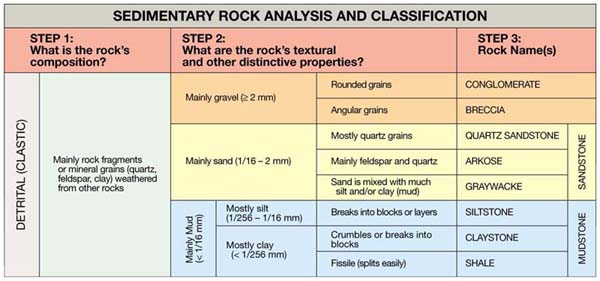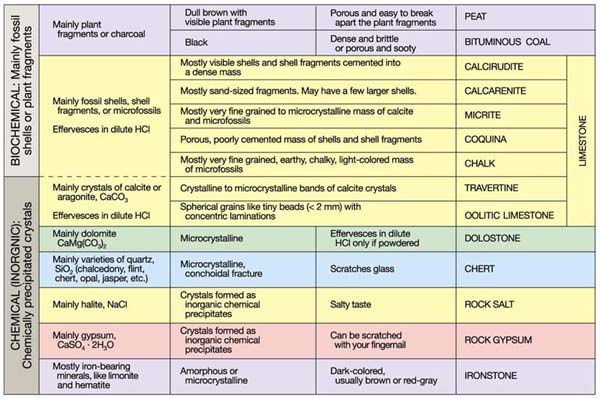|
Clastic |
|
|
If you have determined that your rock is made of bits and pieces of other rocks, your rock is considered a clastic sedimentary rock. The next step is to determine the size of the clasts. Gravel sized clasts - If the clasts are large (gravel size) then the mineralogy will not matter. If the clasts are rounded the rock is a conglomerate, if the clasts are angular the rock is a breccia. Sand size clasts - If the clasts are sand-sized then you have a sandstone. Sometime that is all you need to determine, but it is useful to sub-classify the sample based on the mineralogy of the sand-sized clasts. Use a hand-lens to get a close up look at the sand grains. If the rock is made primarily of quartz then it is a quartz sandstone. Quartz usually looks like small rounded glass beads. If the rock is made of both feldspar and quartz then it is an arkose. Feldspar has cleavage and will tend to have small flat surfaces that will reflect light like little mirrors. While using your hand-lens, twist your sample around and see if it has sparkly little surfaces. If your rock is a mixture of sand, silt, and clay then it is a graywacke. Silt and clay size clasts
- If the clasts are so small you cannot see them then your rock is a
mudstone, made of silt or clay sized particles. Silt tends to feel gritty
and clay feels smooth. Eating rocks is generally not a recommended
practice, but sometime it can help you distinguish between silt and clay.
Grind a small sample of your rock between your front teeth. If it
feels gritty then it's probably a siltstone, if it feels smooth and slimy
then it's probably a shale or claystone. |
|
|
|
|

